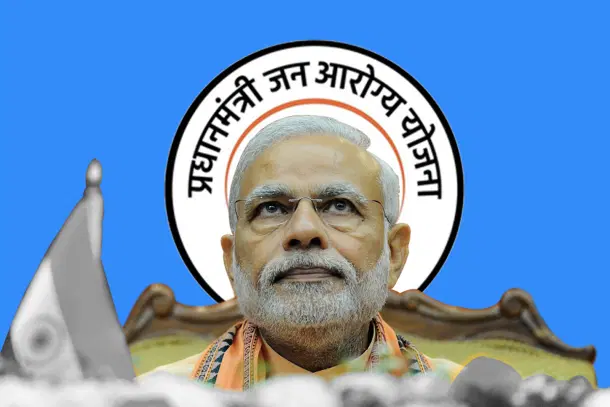News Brief
Private Hospitals Dominate Ayushman Bharat Treatments, NHA Report Shows
Swarajya Staff
Oct 17, 2025, 10:31 AM | Updated 10:31 AM IST
Save & read from anywhere!
Bookmark stories for easy access on any device or the Swarajya app.


Despite forming a smaller share of empanelled facilities, private hospitals are the primary beneficiaries of Ayushman Bharat usage, with most patients opting for treatment in the private sector at higher costs, Indian Express reported.
According to the recently released annual report of the National Health Authority (NHA), the private sector accounts for more than half of all treatments approved under Ayushman Bharat and nearly two-thirds of the treatment cost received by beneficiaries under the scheme
Since its launch seven years ago, Ayushman Bharat has facilitated over 9 crore treatments, amounting to an expenditure of Rs 1.29 lakh crore.
Out of 31,005 hospitals empanelled, just 45 per cent belong to the private sector.
However, they accounted for 52 per cent of the 9.19 crore hospitalisations recorded under the scheme, the report found.
The report further noted that around 66 per cent of the Rs 1.29 lakh crore spent on treatments under Ayushman Bharat went to private healthcare institutions.
Haemodialysis remains the most frequently availed treatment under the scheme, followed by routine ailments such as fever.
Accounting for 14 per cent of all treatments since 2018, haemodialysis procedures are required multiple times a week for patients with kidney failure — explaining their large share.
Apart from dialysis, fever (4 per cent), gastroenteritis (3 per cent), and animal bites (3 per cent) made up the next most common treatments.
In 2024–25, general medicine, ophthalmology, and general surgery were the top three specialities utilised under the scheme.
Uttar Pradesh and Punjab emerged as leading states both in terms of patients travelling out for treatment and those arriving for care.
The scheme’s portability feature enables beneficiaries to avail of treatment beyond their home state, a key advantage of Ayushman Bharat.
Chandigarh recorded the highest patient inflow under portability, representing 19 per cent of all such cases till March 2025.
It was followed by Uttar Pradesh (13 per cent), Gujarat (11 per cent), Uttarakhand (8 per cent), and Punjab (8 per cent).
Meanwhile, Uttar Pradesh led in patient outflow at 24 per cent, followed by Madhya Pradesh (17 per cent), Bihar (16 per cent), and Punjab and Himachal Pradesh (7 per cent each).
The government’s effort to establish a unified digital health infrastructure has made significant progress.
Since its 2021 launch, 50 crore health records have been linked under the ABHA system, with nearly 60 per cent of Indians now possessing a 14-digit ABHA number to digitally store medical data.
To build this digital ecosystem further, the NHA is registering healthcare facilities and professionals on its platform.
As of now, 3.8 lakh facilities (38 per cent of total) and 5.8 lakh health professionals (26 per cent) are enrolled in the system.
Launched in 2018 to promote universal health coverage, Ayushman Bharat addresses India’s heavy reliance on private hospitals — which provide over half of all hospital-based care.
The scheme has significantly reduced out-of-pocket expenses, ensuring that citizens can access private healthcare without financial strain, while government spending continues to rise.
Please click here to add Swarajya as your preferred and trusted news source on Google
Also Read: ‘Revolutionary Step’: PM Modi Hails Ayushman Bharat Rollout In Delhi





